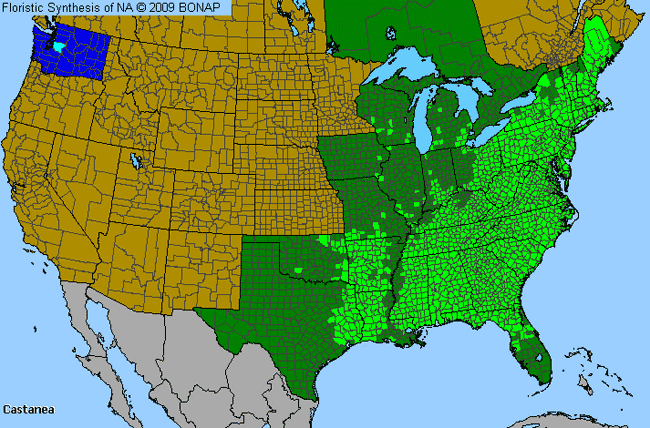Chestnut (Castanea)

Chestnut Genus Details

The native chestnut grows to over 100 feet tall and produces valuable nuts and decay-resistant lumber. It has been almost eliminated from its range in the eastern U.S. due to a serious fungal disease. A few other species within the genus, Chinese and Japanese chestnuts and native chinquapins, grow in the same area but are no taller than 30-60 feet. The trees are monoecious (having both male and female flowers on the same plant) and insect pollinated. Flowering usually occurs after leaves appear in June or July. Chinquapins will flower in March thru April in southern states and September thru October in the northeast and southeast states.
Chestnut Allergy Info

The native chestnuts produce little airborne pollen since they are insect-pollinated. This results in a minor importance for causing pollinosis. However, the European chestnut has been reported to produce windborne pollen that travels long distances. The allergenicity has not been verified.
Chestnut Pollen Description

Pollen grains are prolate and tectate. The grains are small and the exine is smooth.
Pollen grains of Castanea vary in size from 15-18 x 13-16 micrometers.
Species in This Genus

Allergenicity Legend:
 Mild Allergen |
Mild Allergen |
 Moderate Allergen |
Moderate Allergen |
 Severe Allergen |
Severe Allergen |
 Allergy Test Available
Allergy Test Available
Chestnut (Castanea) is a genus of the FAGACEAE family.
This genus includes the following allergenic species:
This genus includes the following allergenic species:













